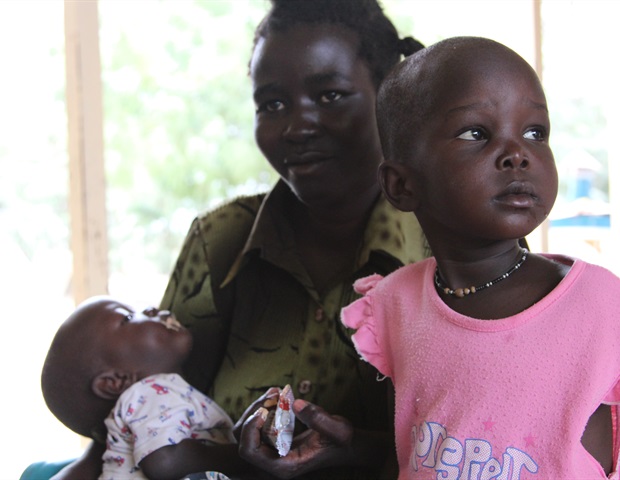In a recent study published in the journal Eurosurveillance, researchers investigated the latest increase in cases of invasive group A streptococcal (iGAS) infection among children in England below the age of 15 to understand the clinical presentations of iGAS as well as the incidence of co-infections with respiratory viruses.
 Study: Increase in invasive group A streptococcal infection notifications, England, 2022. Image Credit: ART-ur / Shutterstock
Study: Increase in invasive group A streptococcal infection notifications, England, 2022. Image Credit: ART-ur / Shutterstock
Background
The year 2022 saw increased Streptococcus infections such as scarlet fever and iGAS among children in England. In addition, co-infections of iGAS and other respiratory viruses were also reported during the latter half of 2022 among children below the age of 15. Invasive group A streptococcal infections are diagnosed through throat cultures or using rapid strep antigen tests, and positive cases must be mandatorily reported to the United Kingdom (U.K.) Health Security Agency’s Second Generation Surveillance System (SGSS) for contact tracing.
Incidence of iGAS
During the 2022–2023 season, which runs from mid-September of one year to mid-September of the next, the number of iGAS laboratory notifications increased each week at levels atypical from those expected in England at that time of year. For example, weeks 37–48 saw 772 iGAS cases, and week 48 alone had 110 cases.
Compared to the previous five seasons, the median age of iGAS patients had dropped from 53–57 to 46 years. However, the 2022–2023 season also saw a marked increase in the number of iGAS cases among children, with the percentage of pediatric iGAS cases being 6.4% to 13.3% during the previous seasons and increasing to 26.1% during the most recent season. In addition, infection rates were higher for various age groups compared to previous seasons, with children under the age of one year showing an incidence of 2.5 cases per 100,000, compared to previous incidence rates of 0.1–1.3 per 100,000 cases. Children between the ages of one and four years and five and nine years also had a higher incidence of iGAS cases in 2022–2023 compared to previous seasons.
Weeks 37 to 48 also reported a higher incidence of deaths among children, with 14 out of the 61 iGAS-related deaths being children. In comparison, the previous five seasons had 4–27 deaths during the entire season. Furthermore, pediatric iGAS patients also showed increased streptococcal specimens detected in pleural and lower respiratory tract samples. However, a similar increase in pleural or lower respiratory tract streptococcal specimens was not observed in patients from older age groups.
Viral respiratory co-infections
Data from the SGSS and DataMart, sentinel surveillance on respiratory viruses, suggested that the October–November 2022 period also saw increased reports of co-infections of iGAS and respiratory viruses. Close to a quarter of the pediatric iGAS patients in November 2022 had co-infections with a respiratory virus, with the most commonly occurring respiratory virus being respiratory syncytial virus (12.4% of the iGAS cases among children below 15 years of age), followed by the human metapneumovirus and rhinovirus, at 11.3% and 7.2%, respectively. Five out of the ten mortality cases among pediatric iGAS patients had viral respiratory co-infections.
The specimens from iGAS patients of all age groups did not reveal any unusual M protein gene (emm) types. The emm gene codes for a virulence protein on the surface of Streptococcus pyogenes, and 57% of the iGAS cases in children below 15 years of age were due to the emm 1 type. While the data reported that no new emm types had been detected, the emm 1 M1UK clone, which had been detected in 2010 and was seen in most pediatric iGAS emm 1 isolates, is known to upregulate the expression of a Streptococcus pyogenes virulence factor.
In addition, general practitioners in the U.K. have also reported a marked increase in the number of scarlet fever and sore throat cases between the 37th and 48th week of 2022. This period saw 8,688 scarlet fever notifications compared to the previous seasons from 2017 to 2021, which had between 333 and 2,536 notifications.
Concerns about similar increases in Streptococcus infections are growing in other European countries such as France, Ireland, and the Netherlands. This trend could be attributed to a decrease in immunity due to lower group A streptococci exposure due to the coronavirus disease 2019 (COVID-19) pandemic and associated mitigation measures such as mask-wearing and social distancing.
Conclusions
Overall, the results indicated that compared to previous seasons, the number of Streptococcus infections, such as scarlet fever and iGAS, has seen a marked increase, especially among children below the age of 15. The number of iGAS-related deaths among children has also increased. Immediate notification of iGAS cases, contact tracing, and treatment with prophylactics are essential to arrest the onward transmission of Streptococcus and limit respiratory complications.
Journal reference:
- Guy, R., Henderson, K. L., Coelho, J., Hughes, H., Mason, E. L., Gerver, S. M., Demirjian, A., Watson, C., Sharp, A., Brown, C. S., & Lamagni, T. (2023). Increase in invasive group A streptococcal infection notifications, England, 2022. Eurosurveillance, 28(1). https://doi.org/10.2807/1560-7917.es.2023.28.1.2200942, https://www.eurosurveillance.org/content/10.2807/1560-7917.ES.2023.28.1.2200942

 PARENTING TIPS
PARENTING TIPS PREGNANCY
PREGNANCY BABY CARE
BABY CARE TODDLERS
TODDLERS TEENS
TEENS HEALTH CARE
HEALTH CARE ACTIVITIES & CRAFTS
ACTIVITIES & CRAFTS

